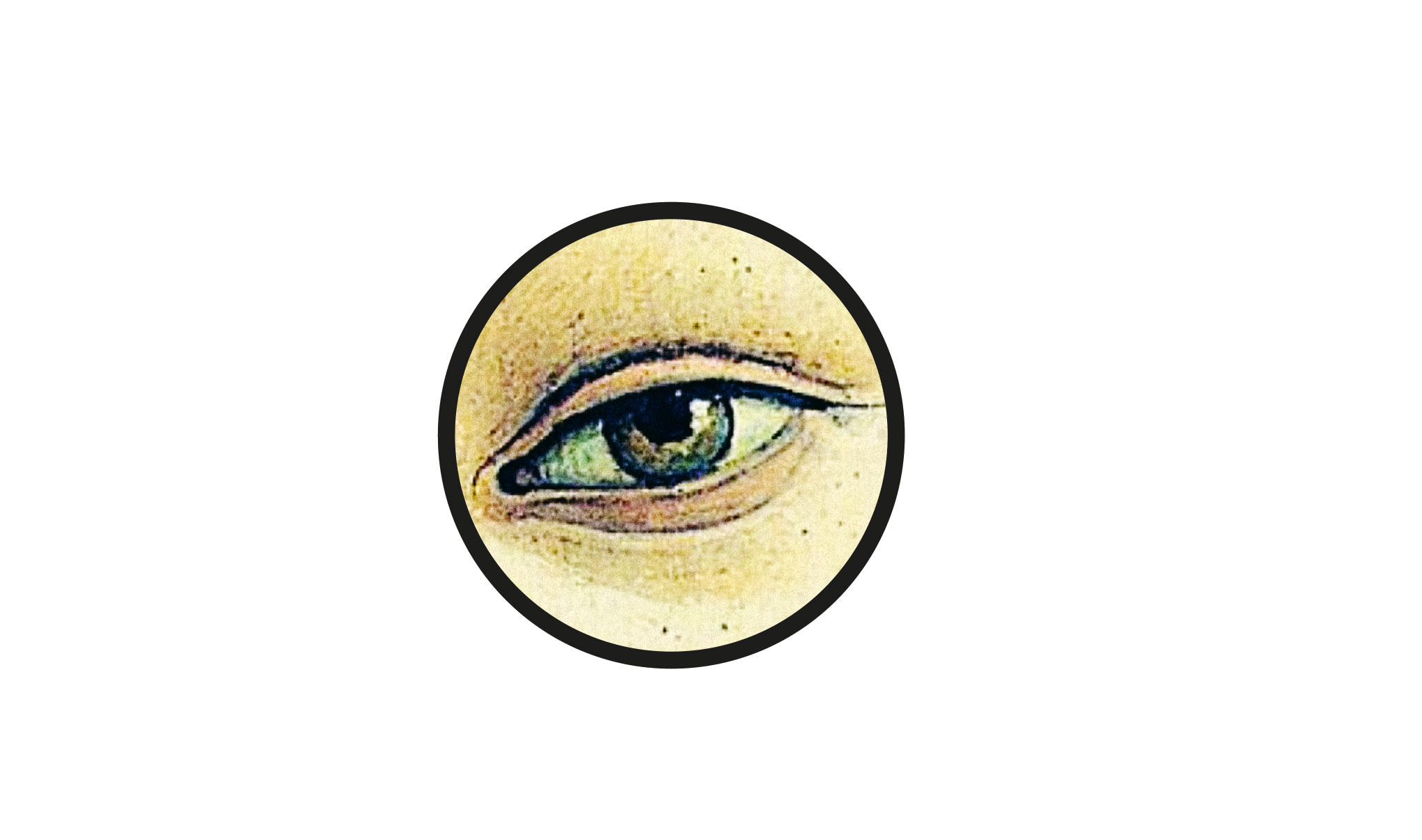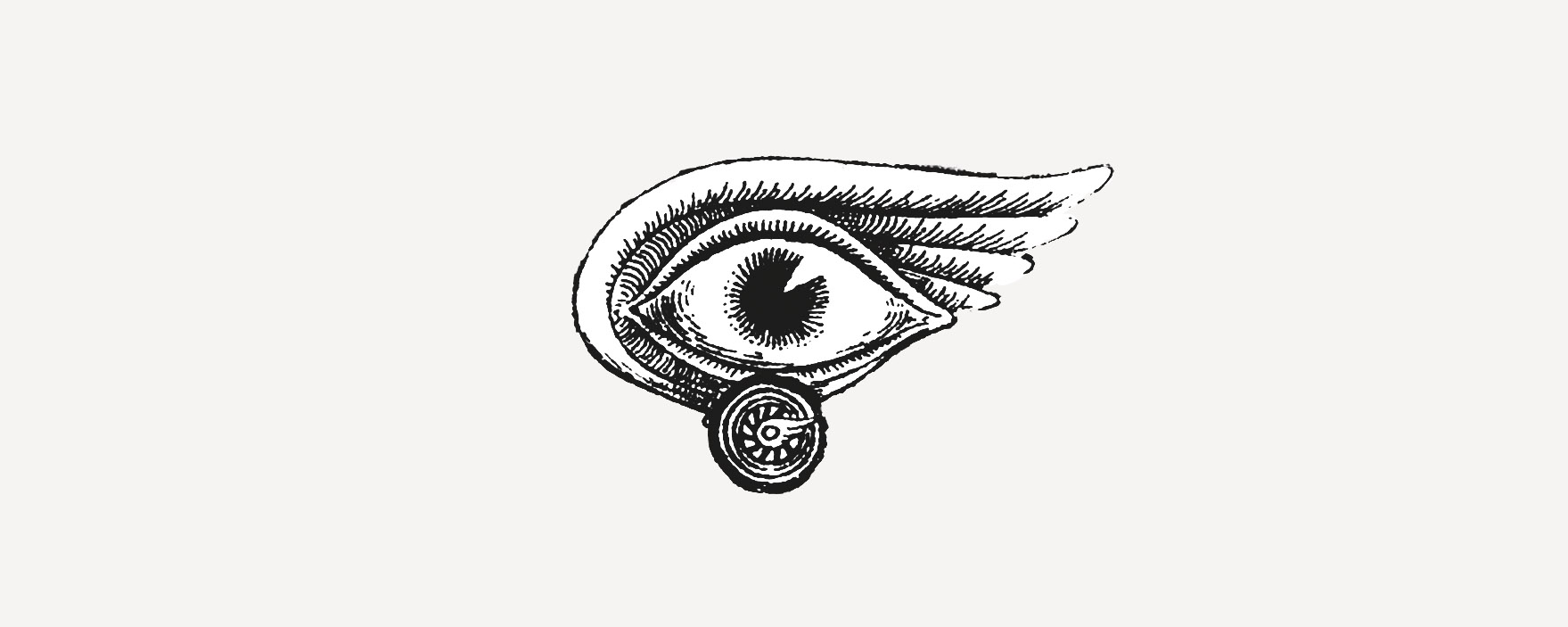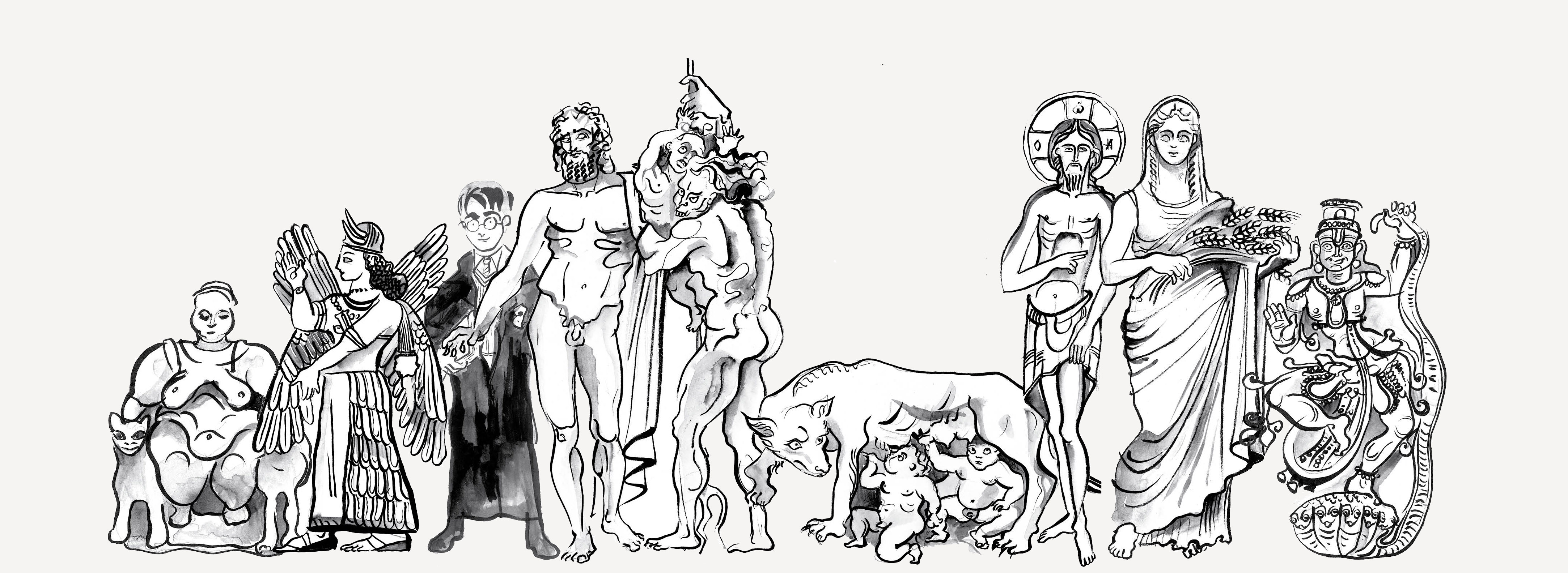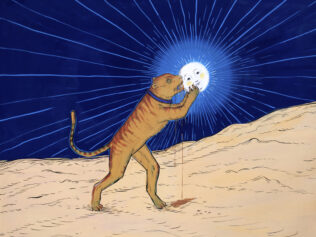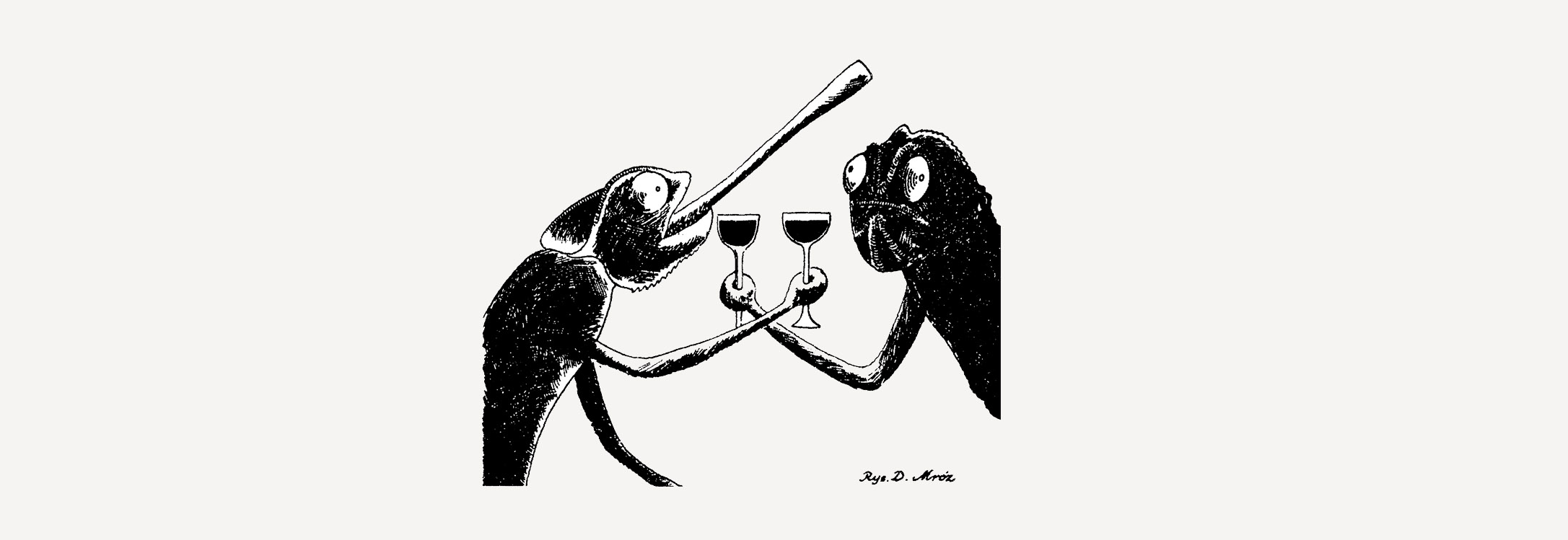
On hot days, a natural reflex makes you seek shelter in the shade. Noon is the time of day when the sun – without which there would be no life – shows its destructive strength. Salvation can only be found in the shade.
He who forgets that the sun has a dark, destructive side is doomed. Slavic mythology featured Poludnitsa, or Lady Midday, a malicious, murderous demon that hunted imprudent folk who ventured into the fields at high noon in the summer. The famous master of Christian asceticism Evagrius Ponticus wrote of the most troublesome noonday demon, otherwise known as the demon of acedia, who would paralyse people with feelings of powerlessness and hopelessness in the middle of the day, tormenting them with a premonition that the life they were leading was a failure. It would prompt nervous movements and a desperate search for something that confirmed the value and meaning of their existence. And just as the sun burns most fiercely at noon, when it is at its zenith and begins to lean towards the west, thus the demon of acedia, with particular ferocity, afflicts people at the zenith of life. It is at that critical moment, when it is clear that a long path has already been traversed and that the time remaining – no matter how long – is finite, that the demon poisons the soul with doubt, highlighting the void of human existence and plunging the person into despair.
In mythological stories, ambivalence reaches all the way to the foundations of creation. In the Old Testament, before God and Satan face one another and God gathers all good within himself, leaving evil to the devil, before this radical separation occurs, it transpires that divine reality is much more complicated. The devil is not the opponent of God but belongs to him and puts people to the test at his request. He is, as Alfonso di Nola points out in his monograph on the devil, the enemy of people, not God. As in the opening scene of the Book of Job, when the Sons of God, Satan among them, appear before the Lord – it is with Satan that God talks about Job and, convinced by his arguments, gives Job to him, saying: “Everything he has is in your hands, but on the man himself do not lay a finger.” Also in the story told in the First Book of Samuel, when God is disappointed with King Saul, he sends him an evil spirit that torments him. This divine ambiguity is perfectly reflected in the astonishing appeal from the version of the Lord’s Prayer that was established in tradition thanks to the Vulgate (though biblically incorrect): “And lead us not into temptation!” Can God lead us into temptation?
A challenge to God
In her essay “Disillusionment: The Story of Adam and Eve and that of Lucifer”, well-known British psychoanalyst Hanna Segal (who was born in Łódź) analyses the version of the fall of Lucifer told by Milton in Paradise Lost. First, God gathers his angels and announces that his Son will sit at his right hand. He orders everyone to pay homage to him and swear obedience. Lucifer, who had been the first archangel until then, can’t bear the humiliation and, with the support of his followers, issues a challenge to God. He loses and is thrown from heaven into chaos. He knows that he can return if he admits his guilt and humbles himself before God. But he rejects this opportunity, telling his companions: “Better to reign in Hell than serve in Heaven.”
Religious tradition requires us to see in Lucifer a pattern of arrogance for which he is justly punished. But according to Segal, there is something cruel about God’s attitude. In fact, like a bad father (like so many of the bad fathers that feature in therapy session epiphanies), God pushes Lucifer away, and Lucifer in his desperation sees no other choice but to rebel. Humiliation is not an option. What else can he do? He sees evil around him and reacts to it with aggression. Hell is a manifestation of his despair and anger. He creates a paranoid reality around him in which he is triumphant; then he tries to drag into this reality the God-created world that he hates.
God, by rejecting and degrading Lucifer, leads him into temptation. By hurling him to the depths of despair, he releases the darkest part of his nature. The son of the morning, who until recently belonged to the divine court, is plunged into darkness. But by deceiving Lucifer, God is also deceiving the whole world he created. The fall of Lucifer frees God from darkness and evil, and also from responsibility for evil. The world of those with their eyes fixed on God will be torn from the very beginning between the idea of good and a repressed tendency towards evil. Lucifer, rejected, will saturate the world with his despair and anger. In everything that people do, undertake and dream of, there will always be an admixture of uncertainty, fear and shame. An admixture pushed out of the bright world of consciousness into the darkness of the unconscious. When Paul the Apostle warned in his Second Epistle to the Thessalonians: “The mystery of iniquity doth already work,” he could feel the pulsing of this hidden, threatening force. The mystery of iniquity – mysterium iniquitatis, as Jerome rendered it in his translation of the Bible – permeates the divine world, the dark current washing over monuments, stripping away illusions and deeply challenging the desire to meet with true holiness in this life. The sad ending of the legends of Jean Vanier, Mother Teresa, and many other gurus in the East and West shows the sinister force of this mysterious and insidious power.
Revolution devours the children
The mystery of iniquity is most pronounced when widespread attention is focused on the bright, rational side of life. For example, the beginnings of modernity: during the French Revolution, Joseph Fouché – a former priest who became a Jacobin and Minister of Police for Napoleon and who was, at the time of the restoration, the Duke of Otranto and a millionaire – announced in a speech delivered on 2nd October 1793 that “the Republic wants only those people who are free: she is determined to exterminate all others and to consider as her children only those who will live, fight and die for her.” And as Michel Onfray describes in his book Decadence: The Life and Death of the Judeo-Christian Tradition, in order to enforce freedom, Fouché ordered mass executions in Lyon: “pits were dug in front of which convicts were tied and killed with cannon fire […].” 1604 people were killed.
The Revolution was supposed to be a triumph of reason over stupidity, light over darkness. Electricity was worshipped in place of Easter, church bells were melted into cannons, and jacks in packs of cards were exchanged for wise men. But this was just one dimension of great change. Another was Jean-Paul Marat’s slogan from November 1792: 270,000 heads must roll. As a result, the Revolutionary Tribunal was created on 9th March 1793, which by July 1794, in addition to Marie Antoinette and revolutionary leaders including Robespierre himself, had sentenced to death a huge number of anonymous people, servants and hairdressers, art merchants and artisans, simple and ordinary people. What happened, writes Onfray, “assumes revenge, the pleasure of destructive power and the fact that you can unburden your sadistic predilections and get off scot free under the guise of great ideas protected by beautiful words. Throats are not cut out of a desire to settle a score with someone we don’t like, but to save the Republic by getting rid of the enemy who was plotting against her! […] This produces the Republic of Liberty, Equality and, of course, Fraternity!” And the global balance of these exercises in fraternity? Between 200,000 and 300,000 fatalities, 1% of the entire population of the country.
Both shadow and light
We must accept that the sun’s light is not without flaws. Michael Mayer, one of the 17th-century alchemists whose achievements so fascinated Carl Jung, came up with the astounding thesis that shadow is contained within sunbeams. Not that a shadow appears because there is an object in the sunbeam’s path, but that there is shadow in the sun itself. “Sun without shade is like a bell without a clapper,” said Mayer. In response to the alchemist’s ideas, Jung posited that the sun and its shadow are the Self and its field of consciousness. The shadow of the sun is the dark side of the Self, for the basis of the Self is the dark side of the psyche. The Self has its alter ego which accompanies it like Cain accompanies his brother Abel – an unwanted element, pushed into the abyss of the unconscious. This ‘other Self’ is, according to Jung, the negative side of the personality, the sum of all the unpleasant qualities that we would like to hide. Christian tradition, as noted by Benedictine monk and doctor of psychology David Steindl-Rast in The Shadow in Christianity, does not always treat darkness and shadow justly: “If you are striving to be perfect and pure, everything depends on getting the right idea of what absolute purity and perfection mean. We tend to get trapped in the idea of a static perfection that leads to rigid perfectionism. Abstract speculation can create an image of God that is foreign to the human heart. On the level of religious doctrine, it’s a God that is totally purged of anything that we call dark. Then we try to live up to the standards of a God that is purely light and we can’t handle the darkness within us. And because we can’t handle it, we suppress it. But the more we suppress it, the more it leads its own life, because it’s not integrated. Before we know it, we are in serious trouble.” It was because of this stiffness, this fixation on an idea of perfection, that it was so easy for generations of revolutionaries fighting for justice and order to murder those whom they perceived as an obstacle to universal happiness. For the same reason, people who thought of themselves as civilized opposed and murdered other people, on all continents, whom they considered ‘savages’. In the end, as Jung noted in his memoirs: “The dammed-up instinctual forces in civilized man are immensely destructive and far more dangerous than the instincts of the primitive […].” He felt that no wars of the past could match the scale of atrocity of wars waged between civilized nations.
The rejected shadow takes the form of a devil; a stranger, likened in popular Christian iconography to the Greek god Pan with his horns and hooves. This resemblance reminds us that it belongs to an ancient civilization that lost to Christianity. There is no place for him in the bright world. He hides in the dark, sneaks in at night, frightens, deceives, and then torments those who succumb to him in hell. He is scary, and ludicrous at the same time. He flees when the cock crows. He belongs to the rejected world, but eventually, he too is harnessed in the service of triumphant good. He must admit, in the words of Goethe: “I am part of that power which eternally wills evil and eternally works good.”
On the side of the shadow
Another image of the devil is the one presented on the 15th card of the Tarot of Marseilles. This is not a black monster, but an intriguing figure with female breasts, the feet of a bird, the horns of a deer and the wings of a bat. Why the wings of a bat? Because “our loathing of the bat goes beyond all logic. So, too, our fear of the Devil – and for similar reasons. The bat seems to us a monstrous aberration of nature – a squeaking mouse with wings. As with the Devil, his disparate parts defy natural laws. We tend to view all such malformations – the dwarf, the hunchback, the calf with two heads – as the work of some sinister, irrational power, and the creature itself as an instrument of this power. One uncanny talent shared by bat and Devil is the ability to navigate blind in the dark. We intuitively fear such black magic” (Sallie Nichols, Jung and Tarot: An Archetypal Journey). What can a winged devil do? Where can he get to? What it is that he can see, but that is concealed to light-adapted eyes? Here is the inhuman ability that allows the devil to move in the sphere of shadow, a territory that belongs to our alter ego. He sees what the Self cannot see because it does not want to see it. The Self that holds on to the bright, sunny, rational side of life is residing in delusion – the illusion of itself and the world around it. Everything in this world is laid out, predictable, and somehow amenable to life, which – if you just put in a bit of effort – is a nice adventure, like a visit to Disneyland. The world of the Self is a world of progress, personal development and the joyful lightness of being. Every failure is transformed into success, suffering leads to improvement, and change opens up wonderful new perspectives. The devil, if you remember him at all, is a comic book gimmick.
However, there is another side to life. There comes a day when – as Witkacy said – the cloud has an even darker lining. The devil leaps out of the box. “If,” says Jung in Mysterium Coniunctionis, “the process of separation is carried so far that the complementary opposite is lost sight of, and the blackness of the whiteness, the evil of the good, the depth of the heights, and so on, is no longer seen, the result is one-sidedness, which is then compensated from the unconscious without our help.” Bad dreams and depression arise. The ‘black swan’ swoops in and breaks up the orderly, safe world. The incomprehensible mystery of existence, and the riddle that everyone is unto themselves, are revealed.
Confrontation with the dark side of existence, with one’s own shadow, forces us to abandon the mystification of the Self. As the Episcopal priest and Jungian analyst John A. Sanford points out, it is the ego that lies, not the shadow. It is the ego that is diabolic. By experiencing the dark side of ourselves, consciously acknowledging its existence, we gain contact with the deep spheres of our psyche that are inaccessible to the ego, locked up in its safe shell. In Sanford’s opinion, God is on the side of the shadow, not the ego. The shadow is closer to the creative source. The shadow, according to another well-known successor of Jung, Edward C. Whitmont, is the door to our individuality.
Our first reaction to personal crisis, a crisis in the world that surrounds us, is to invoke our strengths, which we know well (or so we think). The thing is, if we were strong enough, the crisis would not pose a threat. A crisis reveals our weaknesses. Our fears, egoism, cunning, selfishness, love of comfort, negligence, self-deception, naive fantasies, and our indomitable inclination to subordinate everything for our own interests. A crisis presents an opportunity to admit these things to ourselves, to think about how they have influenced our lives without us even knowing about them. To look at ourselves from a broader, more inclusive perspective.
When we choose to hide in the shade on a hot day, we allow ourselves to relax, resting our mind and body which have wearied of playing the narcissistic game, constantly demonstrating our strength and beauty to the world. The deeper the shade, the more we experience the world with senses other than sight, taking in the smells, sounds and other sensations around us. We breathe more fully. Finally, we can pay attention to ourselves, allow ourselves to consider weariness and weakness, what has real value, and what is only on the surface.
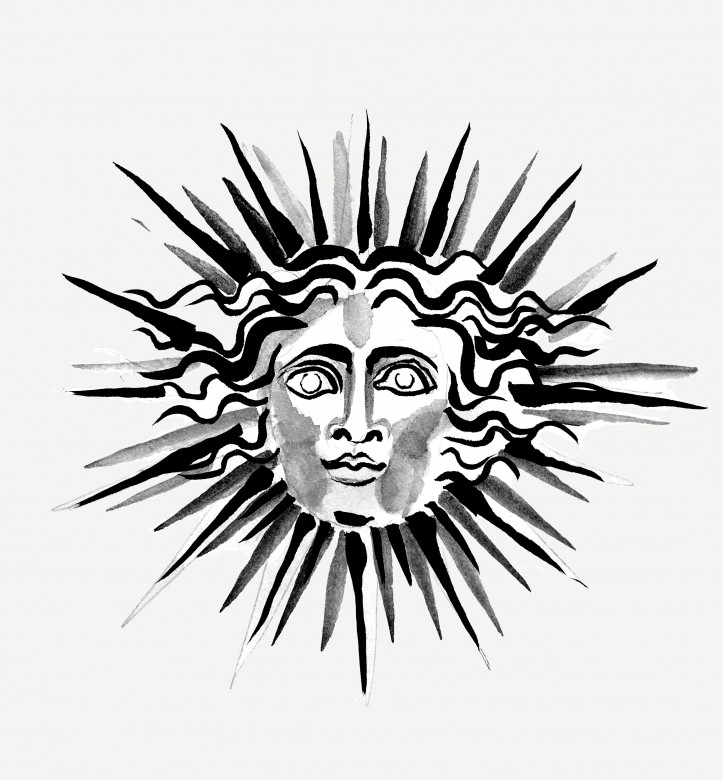
In writing this article I made reference to texts by Sallie Nichols, John A. Sanford, David Steindl-Rast and Edward C. Whitmont from Meeting the Shadow: The Hidden Power of the Dark Side of Human Nature eds. Connie Zweig and Jeremiah Abrams.





